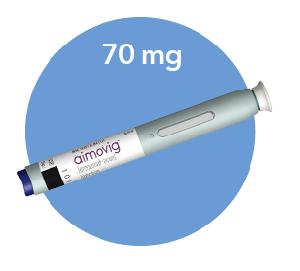Erenumab Disease Interactions
There are 2 disease interactions with erenumab.
Erenumab (applies to erenumab) constipation
Moderate Potential Hazard, Moderate plausibility.
Constipation is a common side effect of erenumab therapy and while it is usually mild or moderate in intensity, there have been postmarketing reports of constipation with serious complications including hospitalization and surgery. Onset of constipation was generally after the first dose, although there were reports later in treatment. Patients should be monitored for severe constipation and managed as clinically appropriate. Patients with history of constipation or using medications associated with decreased gastrointestinal motility may be at increased risk for more severe constipation.
Erenumab (applies to erenumab) hypertension
Moderate Potential Hazard, Moderate plausibility.
Hypertension and worsening of preexisting hypertension have been reported in the postmarketing period with erenumab; some patients required pharmacologic treatment and some required hospitalization to control blood pressure. Many patients had preexisting hypertension or risk factors for hypertension. Monitor patients for new onset or worsening hypertension and consider discontinuing therapy if no other cause for hypertension is identified.
Switch to professional interaction data
Erenumab drug interactions
There are 3 drug interactions with erenumab.
Erenumab alcohol/food interactions
There is 1 alcohol/food interaction with erenumab.
More about erenumab
- erenumab consumer information
- Check interactions
- Compare alternatives
- Reviews (665)
- Side effects
- Dosage information
- During pregnancy
- Support group
- Drug class: CGRP inhibitors
- Breastfeeding
- En español
Related treatment guides
Drug Interaction Classification
| Highly clinically significant. Avoid combinations; the risk of the interaction outweighs the benefit. | |
| Moderately clinically significant. Usually avoid combinations; use it only under special circumstances. | |
| Minimally clinically significant. Minimize risk; assess risk and consider an alternative drug, take steps to circumvent the interaction risk and/or institute a monitoring plan. | |
| No interaction information available. |
See also:
Further information
Always consult your healthcare provider to ensure the information displayed on this page applies to your personal circumstances.


